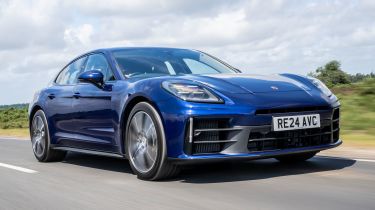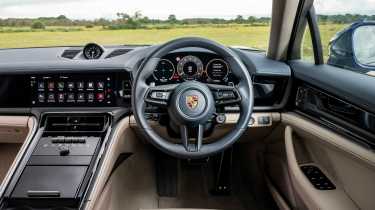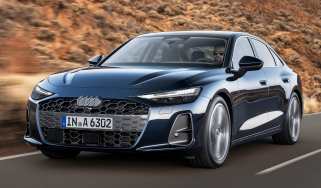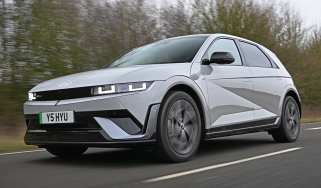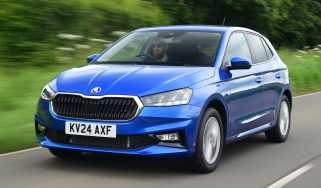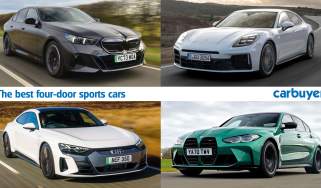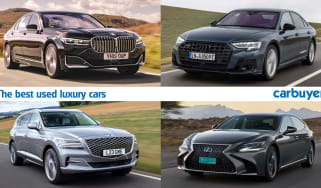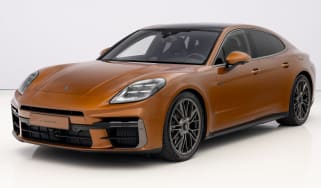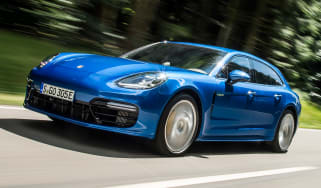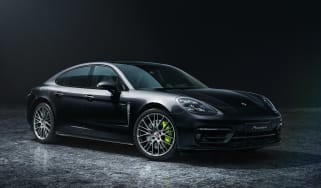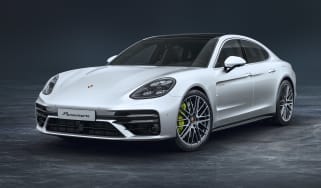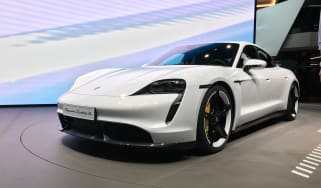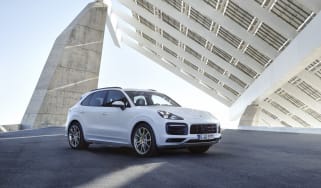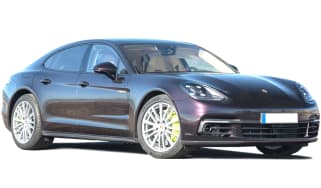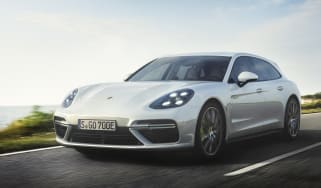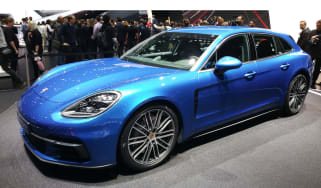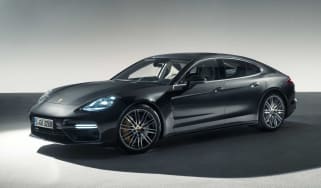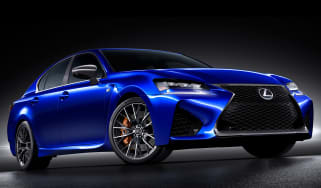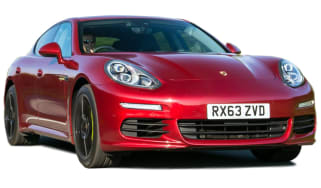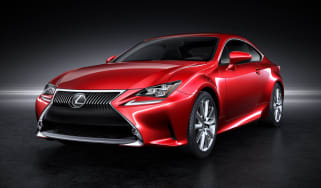Porsche Panamera review – a tech-packed sports saloon
"If you’re not put off by its steep price tag, the Porsche Panamera offers performance worthy of its badge, and yet offers space for four”
Pros
- Beautifully designed and finished interior
- Great to drive
- Brilliant, grippy four-wheel drive system
Cons
- Expensive
- Rivals are more comfortable and refined
- Size makes manoeuvring tricky
Verdict – is the Porsche Panamera a good car?
The latest Porsche Panamera is even better thanks to a refreshed new look, an even more impressive interior and first-rate build quality. It feels just as good to drive – there’s even improved steering – and there’s now more tech on offer than in the previous model. The Porsche Panamera was already a desirable luxury car, and its status has only improved, although if comfort is your top priority, some rivals are more relaxing, and it can also get very expensive if you tick too many boxes. While it’s more hardcore, the GTS still feels like it strikes a great balance of driving involvement and all-round upmarket appeal, though it is rather thirsty and very expensive to buy.
Porsche Panamera models, specs and alternatives
While the Porsche Panamera caused quite a stir when it was released as the second four-door Porsche following the Cayenne SUV, it’s since become a well-established model in the lineup. The latest version has undergone a thorough overhaul for 2024 – it’s virtually a new model – with Porsche keen to keep its combustion-engined sports saloon competitive against rivals.
The latest Panamera gets a new look that brings it more in line with Porsche’s electric Taycan and Macan in terms of design. The headlights have been redesigned with a slightly squarer look incorporating individual LED elements within the clusters a-la Porsche Taycan. While the rear light bar on the outgoing Panamera got thinner towards the middle on the bootlid, the latest update stays a consistent length along the whole width of the car for a less fussy, more minimalist look.
Like with the latest Porsche Cayenne facelift, the interior has been reworked, too, with the option of a 10.9-inch touchscreen display on the passenger side, a fully digital gauge cluster as standard, rather than the individual digital gauges from before, and a redesigned centre console. The latest Panamera is well equipped, but undeniably expensive. For 2025 it gained a bit of extra kit in the form of some extra convenience and safety features, along with Bose audio as standard.
More reviews
The Panamera range starts from just over £89,000 with the standard 348bhp V6 twin-turbocharged engine, while a four-wheel drive option badged Panamera 4 sits above this. The more hardcore GTS model arrived shortly after launch as the only other pure-petrol offering. The three other models are plug-in hybrids: the Panamera 4 E-Hybrid, 4S E-Hybrid and top-spec Turbo E-Hybrid – it’s likely other models will be added to the lineup over time.
No matter which version you plump for, you’re likely to find the Panamera a very easy car to live with. Its hatchback boot opening puts it at an advantage over the saloon-style bootlids of cars such as the BMW M5 and now-discontinued Mercedes CLS.
The Porsche Panamera’s unique selling point is its impeccably sporty driving feel, even for a four-door saloon car – if comfort’s the main priority you’d be better off with a Mercedes S-Class.
Even in entry-level, rear-wheel drive guise, the standard Panamera is no slouch. It uses a turbocharged 2.9-litre petrol engine producing 348bhp, enabling 0-62mph in 5.3 seconds, while specifying the four-wheel drive Panamera 4 cuts this town to 5.0 seconds, and commands a £3,000 premium. The GTS is the next pure-petrol model up, boasting a twin-turbo V8 with 493bhp which can propel it from 0-62mph in a rapid 3.8 seconds.
Our experience with the Panamera 4 confirmed it as an impressive sports saloon, though the petrol V6 feels more sedate in the Panamera compared with its application in Audi RS models. We’ve since tried the Panamera GTS, which we think is a brilliant driver’s car, giving its luxurious rivals a real run for their money. It feels old-fashioned in all the best ways possible thanks to the analogue feel and the raw sound of its pure-petrol V8.
The three plug-in hybrid cars, badged E-Hybrid, are all capable of up to nearly 60 miles of electric driving from a single charge. There’s a Panamera 4 E-Hybrid with a 2.9-litre V6 and electric motor producing a healthy 464bhp, or the Panamera 4S E-Hybrid which features a tweaked version of that same combustion engine for a total output of 537bhp. The range-topper was the Turbo E-Hybrid, which combines a 4.0-litre V8 engine with the motor for a whopping 671bhp, with a similarly eye-watering circa-£151,000 price tag, but there’s now an even more powerful and pricey Turbo S E-Hybrid with 771bhp and £175,000 price tag.
